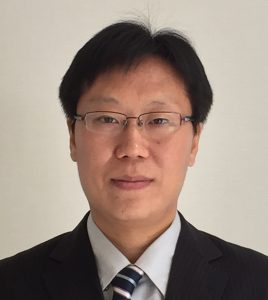 Assoc. Prof. Janos Botzheim
Assoc. Prof. Janos Botzheim
Eötvös Loránd University, Faculty of Informatics, Department of Artificial Intelligence
Title: Bacterial Memetic Algorithms. Introduction and Applications.
Bio:
Janos Botzheim’s degrees earned: Budapest University of Technology and Economics: M.Sc. in Technical Informatics (2001), Ph.D. in Computer Science (2008). Visiting positions: long-term and short-term visits and scholarships as Ph.D. student at the following Universities: Czech Technical University, Prague, Czech Republic (2002, 1 month); Johannes Kepler University, Linz, Austria (4 months in 2003, 2 months in 2004, 4 months in 2005); Cracow University of Technology, Cracow, Poland (2003, 1 month); The Australian National University, Department of Computer Science, Canberra, Australia (8 months, 2005-2006). He joined the Department of Automation at the Szechenyi Istvan University, Gyor, Hungary in 2007 as a senior lecturer, in 2008 as an assistant professor, and in 2009 as an associate professor. He was a visiting researcher in the Graduate School of System Design at the Tokyo Metropolitan University from September 2010 to March 2011 and from September 2011 to February 2012. He was an associate professor in the Graduate School of System Design at the Tokyo Metropolitan University from April 2012 to March 2017. He was an associate professor in the Department of Mechatronics, Optics and Mechanical Engineering Informatics at Budapest University of Technology and Economics since February 2018 to August 2021. He is the Head of Department of Artificial Intelligence at Eötvös Loránd University, Faculty of Informatics, Budapest, Hungary since September 2021. Research interests: computational intelligence, automatic identification of fuzzy rule based models and some neural networks models, bacterial evolutionary algorithm, memetic algorithms, applications of computational intelligence in robotics, cognitive robotics. Membership in scientific societies: John von Neumann Computer Society, Hungarian Academy of Engineering, Hungarian Fuzzy Association, IEEE, IEEE Computational Intelligence Society, IEEE Robotics and Automation Society, IEEE Systems, Man, and Cybernetics Society, IEEE Computer Society. He has about 180 papers in journals and conference proceedings. The number of his known independent citations is about 560. He has been an invited reviewer of several scientific journals and conferences.
Abstract:
Evolutionary algorithms play a significant role as search techniques for handling complex problems in many fields such as artificial intelligence and engineering. The advantage of evolutionary algorithms is their ability to solve and quasi-optimize problems with non-linear, high-dimensional, multi-modal, and discontinuous character. These algorithms have the ability to explore large spaces, without demanding the use of derivatives of the objective functions, such as by gradient-based training methods. Their principles are based on the search for a population of solutions, where tuning is done using mechanisms similar to biological recombination.
 Assoc.Prof. Celimuge Wu
Assoc.Prof. Celimuge Wu
The University of Electro-Communications, Japan
Title: Federated Learning for Internet of Vehicles
Bio:
Celimuge Wu received his PhD degree from The University of Electro-Communications, Japan in 2010. He has been an associate professor of The University of Electro-Communications since 2015. His research interests include Vehicular Networks, Edge Computing, IoT, Intelligent Transport Systems, and Application of Machine Learning in Wireless Networking and Computing. He serves as an associate editor of IEEE Transactions on Network Science and Engineering, IEEE Transactions on Green Communications and Networking, IEEE Open Journal of the Computer Society, Wireless Networks, and IEICE Transactions on Communications. He also has been a guest editor of IEEE Transaction on Intelligent Transportation Systems, IEEE Transactions on Emerging Topics in Computational Intelligence, IEEE Computational Intelligence Magazine etc. He is the chair of IEEE TCGCC Special Interest Group on Green Internet of Vehicles and IEEE TCBD Special Interest Group on Big Data with Computational Intelligence. He is a recipient of 2021 IEEE Communications Society Outstanding Paper Award, and IEEE Computer Society 2019 Best Paper Award Runner-Up. He is a senior member of IEEE.
Abstract:
In order to support advanced vehicular Internet-of-Vehicles (IoV) applications, information exchanges among different vehicles are required to find efficient solutions for catering to different application requirements in complex and dynamic vehicular environments. Federated learning (FL), which is a type of distributed learning technology, has been attracting great interest in recent years as it performs knowledge exchange among different network entities without a violation of user privacy. This talk will focus on networking technologies for supporting FL in vehicular environments in order to facilitate emerging IoV applications.
 Prof. Naoyuki Kubota
Prof. Naoyuki Kubota
Tokyo Metropolitan University, Japan
Title: Topological Twin in Multiscopic Cyber-Physical-Social Systems
Bio:
Naoyuki Kubota is currently a Professor in the Department of Mechanical Systems Engineering, the Graduate School of Systems Design, and Director of Community-centric System Research Core, Tokyo Metropolitan University, Japan. He graduated from Osaka Kyoiku University in 1992, received the M.E. degree from Hokkaido University in 1994, and received the D.E. from Nagoya University, Nagoya, Japan, in 1997. He was an Assistant Professor and Lecturer at the Department of Mechanical Engineering, Osaka Institute of Technology, Japan, from 1997 to 2000. In 2000, he joined the Department of Human and Artificial Intelligence Systems, the School of Engineering, Fukui University, Japan, as an Associate Professor. He joined the Department of Mechanical Engineering, the Graduate School of Engineering, Tokyo Metropolitan University, Japan, as an Associate Professor in 2004. He was an Associate Professor from 2005 to 2012, and a Professor from 2012 at the Graduate School of Systems Design, Tokyo Metropolitan University, Japan. He was a Visiting Professor at University of Portsmouth, UK, in 2007 and 2009, and was an Invited Visiting Professor at Seoul National University from 2009 to 2012, and others. His current interests are in the fields of topological mapping, coevolutionary computation, spiking neural networks, perception-based robotics, robot partners, and informationally structured space. He has published more than 500 refereed journal and conference papers in the above research fields. He received the Best Paper Award of IEEE IECON 1996, IEEE CIRA 1997, MHS 2011, WAC 2012, HSI 2016, and so on. He was an associate editor of the IEEE Transactions on Fuzzy Systems from 1999 to 2010, the IEEE CIS Intelligent Systems Applications Technical Committee, Robotics Task Force Chair from 2007 to 2014, IEEE Systems, Man, and Cybernetics Society, Japan Chapter Chair since 2018, Vice Director, Tokyo Biomarker Innovation Research Association, Japan from 2020, and others.
Abstract:
Cyber-Physical System and Digital Twin have been discussed in various research fields until now. In order to simulate a real-world phenomenon in the cyber world, we often have to extract features and structures based on graph theory and topology. Therefore, we proposed the concept of topological twin. The aim of topological twin is to (1) extract topological structures hidden implicitly in the real world, (2) reproduce them explicitly in the cyber world, and (3) simulate and analyze the real world in the cyber world. Furthermore, Cyber-Physical-Social Systems (CPSS) have been discussed based on the integration of information, intelligence, communication, and robot technologies. Basically, we need a multi-scopic approach to simulate and analyze the interaction in these three worlds, because we must deal with qualitatively different big data simultaneously. For example, we can discuss a phenomenon from three different levels of macro-, meso-, and micro- scopic simulations. In the microscopic simulation, we can deal with the dynamics inside objects and human mental and internal states. In the macroscopic simulation, we can deal with spatiotemporal qualitative relationships and interactions between objects and humans without dynamics. Furthermore, we can deal with a mesoscopic simulation based on the microscopic bottom-up construction and macroscopic top-down constrain. In this talk, we discuss a multi-scopic simulation to discuss human-robot interactions. First, we introduce various types of topological mapping methods, unsupervised learning methods, and graph-based methods. Next, we discuss how to apply topological mapping methods in the multi-scopic simulation for human-robot interactions. Finally, we discuss the effectiveness of the proposed method through several simulation results.

